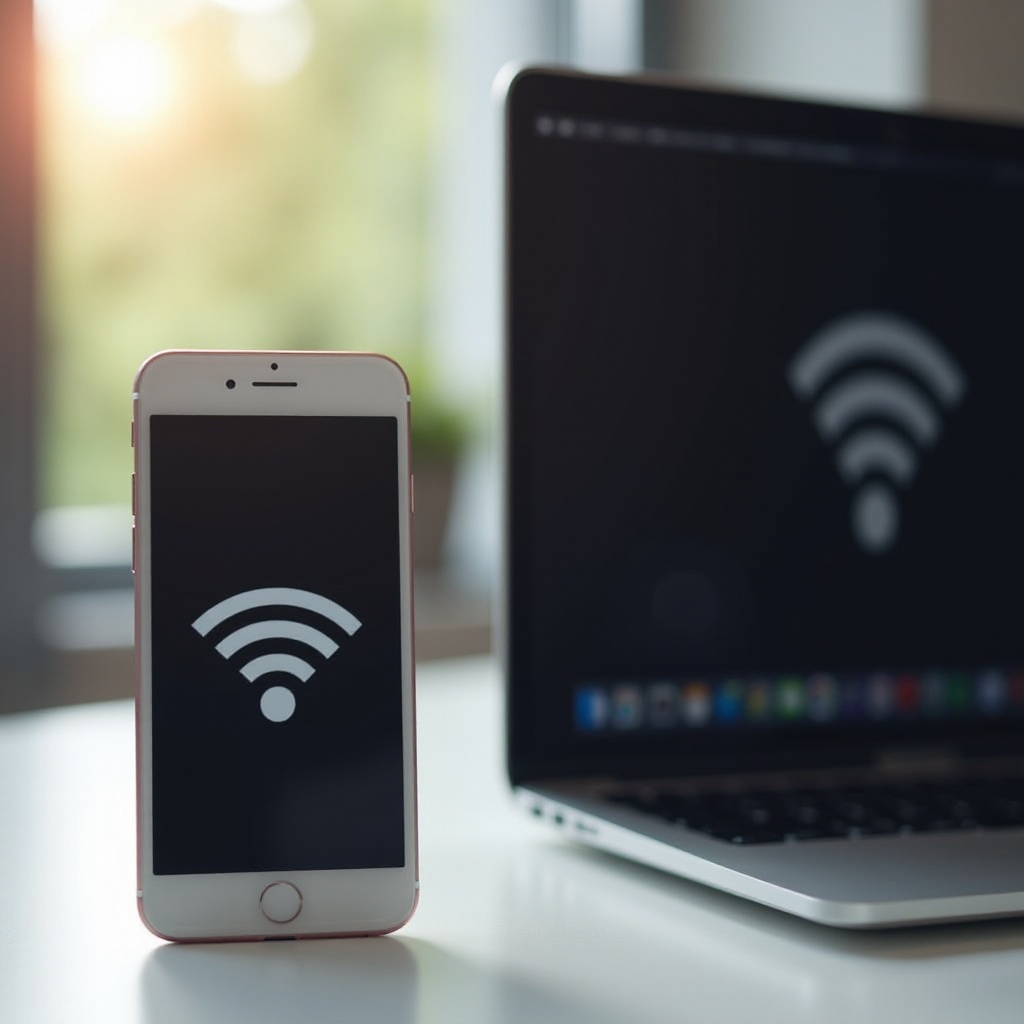Introduction
AirPlay is a fantastic feature that allows you to stream content from your iPhone to your MacBook with ease. Whether you’re looking to share videos, photos, or even mirror your screen for presentations, AirPlay provides a convenient and wireless solution. However, setting it up may not always be straightforward. In this guide, we’ll walk you through the steps necessary to get AirPlay up and running between your iPhone and MacBook. We’ll cover compatibility checks, network settings, enabling AirPlay, troubleshooting tips, and advanced steps to ensure a flawless connection. By the end of this article, you’ll be an AirPlay pro, ready to make the most of this powerful tool.

Checking Compatibility
Before you start, it’s important to verify that your devices support AirPlay. Both your iPhone and MacBook need to meet certain requirements to ensure compatibility.
- iPhone Requirements:
-
Your iPhone should be running on iOS 11.4 or later. To check, go to Settings > General > About and look under the iOS version.
-
MacBook Requirements:
-
Your MacBook should be running on macOS High Sierra or later. To check this, click on the Apple logo at the top-left corner of your screen and select About This Mac.
-
Hardware Requirements:
- Your devices must support AirPlay. Most modern iPhones and MacBooks are equipped with this feature. However, older models may not.
If your devices don’t meet these requirements, you may not be able to use AirPlay effectively.
Ensuring Both Devices Are on the Same Network
To use AirPlay, your iPhone and MacBook need to be on the same Wi-Fi network. This is a crucial step that many users overlook.
- Check iPhone Network:
-
Go to Settings > Wi-Fi on your iPhone. Ensure that you’re connected to a Wi-Fi network.
-
Check MacBook Network:
- Click on the Wi-Fi icon in the top-right corner of your MacBook’s screen. Make sure you’re connected to the same network as your iPhone.
Having both devices on the same network enables them to communicate seamlessly. If you’re experiencing connectivity issues, double-checking the network settings is a good starting point.

Enabling AirPlay on iPhone and MacBook
Once you have confirmed compatibility and network settings, the next step is to enable AirPlay on both your devices.
On iPhone:
- Swipe down from the top right corner to open the Control Center.
- Tap on the Screen Mirroring icon.
- Select your MacBook from the list of available devices.
On MacBook:
- Open the System Preferences by clicking on the Apple logo.
- Select Displays, and check the box next to ‘Show mirroring options in the menu bar when available.
- Look out for the AirPlay icon in the menu bar and ensure it’s switched on.
Enabling these settings should allow you to connect your iPhone to your MacBook effortlessly.
Troubleshooting Common Issues
Even after following the steps above, you may run into occasional issues. Here are some common problems and their solutions:
- AirPlay Icon Not Visible:
- Ensure both devices are updated to the latest software versions.
-
Restart both your iPhone and MacBook.
-
Connection Drops:
- Ensure there are no Wi-Fi interference issues. Try moving closer to the router.
-
Disable and re-enable Wi-Fi on both devices.
-
Poor Video Quality:
- Check your Wi-Fi speed. A slow internet connection can affect streaming quality.
- Close any background apps that may be consuming bandwidth.
Advanced Steps to Fix Connection Problems
If you still encounter problems, you may need to take more advanced steps to diagnose and fix the issues.
- Reset Network Settings on iPhone:
-
Go to Settings > General > Reset > Reset Network Settings. Note that this will erase all saved Wi-Fi passwords.
-
Use an Ethernet Connection on MacBook:
-
If possible, connect your MacBook to the router using an Ethernet cable for a more stable connection.
-
Update or Reinstall macOS:
- Sometimes a fresh install or update of macOS can resolve persistent issues. Make sure to back up your data before proceeding.
If none of these steps work, it might be time to reach out to Apple Support for professional assistance.
Additional Tips for a Better AirPlay Experience
To maximize your AirPlay streaming experience, consider the following tips:
- Close Unnecessary Background Apps: Freeing up resources on both devices can improve performance.
- Enable Bluetooth: While AirPlay uses Wi-Fi, sometimes enabling Bluetooth can enhance the stability of the connection.
- Regular Updates: Keeping your devices updated ensures that you have the latest features and bug fixes.
These additional tips can help you enjoy a smoother and more dependable AirPlay experience.

Conclusion
Getting AirPlay to work between your iPhone and MacBook can significantly enhance your productivity and entertainment experience. By ensuring compatibility, connecting to the same network, enabling the right settings, and troubleshooting common issues, you can enjoy a seamless AirPlay connection. Advanced steps are also available for more persistent problems. Follow these steps, and you’ll be ready to make the most of AirPlay in no time.
Frequently Asked Questions
Why is AirPlay not showing up on my MacBook?
Ensure your MacBook supports AirPlay and is running the latest macOS version. Also, check that both devices are on the same Wi-Fi network.
How do I update the software on my iPhone and MacBook for AirPlay?
On iPhone, go to Settings > General > Software Update. On MacBook, click the Apple logo > About This Mac > Software Update.
Can I use AirPlay between iPhone and MacBook without Wi-Fi?
Unfortunately, AirPlay requires both devices to be on the same Wi-Fi network for streaming content.

